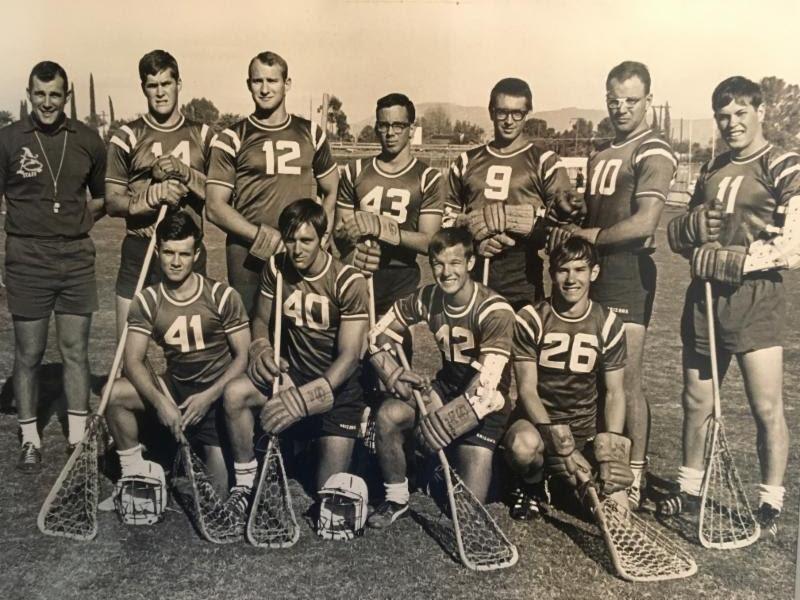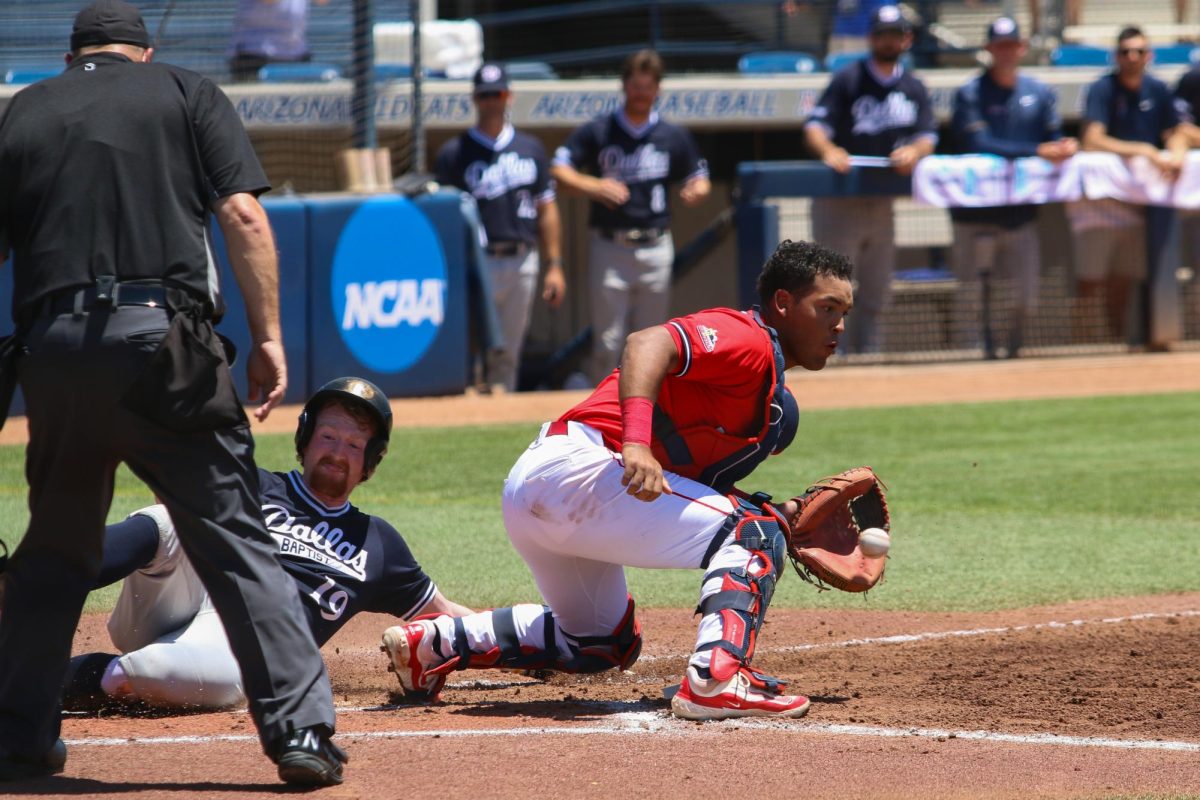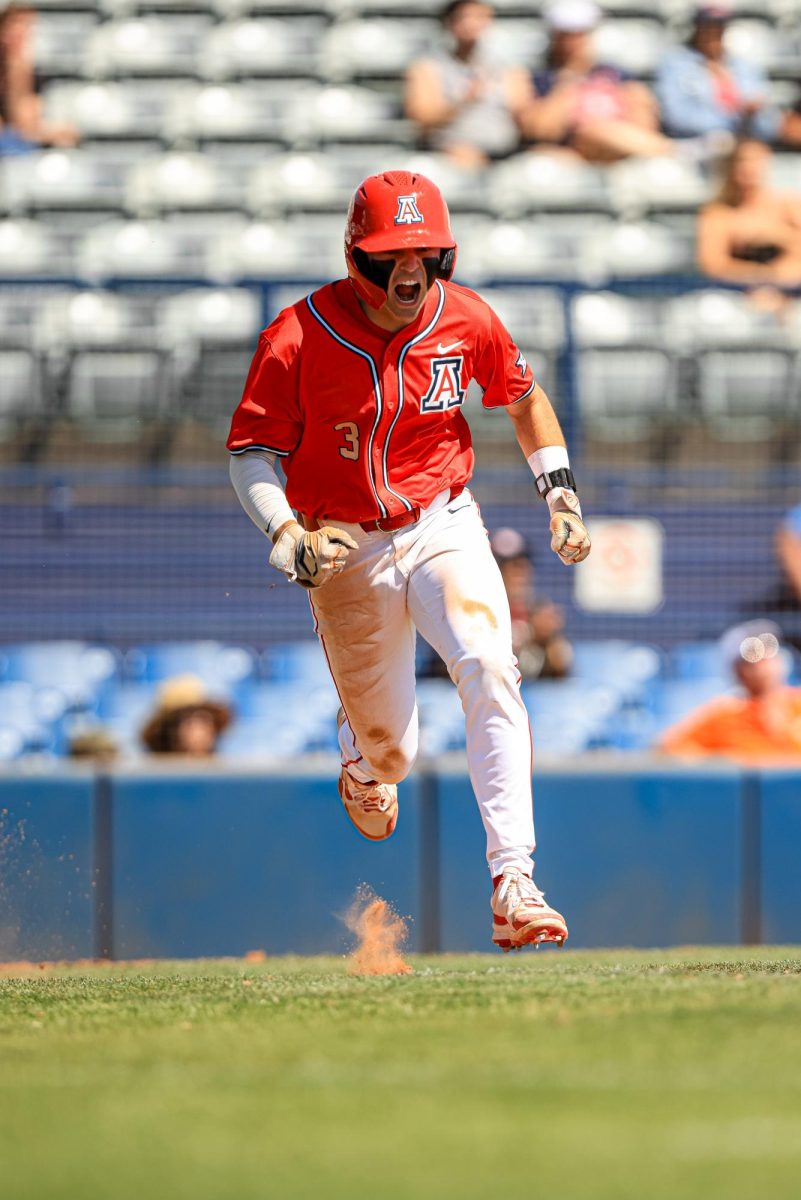In the ‘60s, the sport of lacrosse wasn’t wide spread in Arizona yet. At the time it was really only an “East coast” sport with states like New York, Maryland and New Jersey dominating the scene. While lacrosse struggled to spread past the East coast a man named Carl Runk brought the sport to the University of Arizona. This year’s Homecoming weekend brought many of those players from the ‘60s back to campus to revisit the place they once suited up in red and blue.
Runk, a former UA football player, convinced the university to make a lacrosse team. Runk knew how to play and coach the game, being from Maryland where lacrosse was almost as popular as baseball or football. Eventually Runk made the idea of a team a reality. Runk, who became head coach, brought on UA graduate and former Princeton lacrosse player Willie Cooper as the assistant coach. The team began to grow and in 1966 the team grew to about 20 players.
Jay Greer, a player who started his career in spring 1966, described Runk as a great coach said he enjoyed being on the team.
“He was built like a rock. He was not a screamer but you kind of knew to pay attention to him,” Greer said. “He wasn’t the tallest guy there but he was certainly the most solid. He was a really great guy, I can’t imagine he made any money doing that, it was just for the love of the game.”
The team consisted of players of all different levels of skill and experience. One of the players who was an Arizona native was Phil Bodenhorn.
“We couldn’t play the finesse game, we had to play the knock them down on the ground game,” Bodenhorn said. “When they were within five-yards of the ball, man and ball stick ‘em, make them sore to get up because if we get into the finesse game and the run game we were gonna lose so we played very, very tight defense.”
To complete the team, Runk looked to UA football as he had connections in the athletic department as a former football player. Runk looked at the seniors who were going to be graduating and decided to come out for the lacrosse team to stay in shape for the upcoming football season.
For many players, their first time playing lacrosse was at Arizona. Greer, who grew up in Washington and Virginia had barely even seen the sport before attending the UA.
“I may have seen a picture of somebody playing lacrosse, but it didn’t register to speak in my head,” Greer said. “I had no particular affinity for the game until I got to Arizona.”
Just like Greer, Bodenhorn, who played at Arizona until 1968, was brand new to the sport. With no prior experience of the game Bodenhorn got to work on his skills and made the team. For two hours a day, every day, the lacrosse team practiced at the old polo field, which is now the medical school.
Like many changes on campus, the lacrosse gear was much different back then. The sticks were heavier and made of wood. The netting to hold the ball was made of cat gut innards, which took nearly a year to develop a good “pocket.” Players wore helmets, gloves and some wore elbow pads. Goalies would wear a baseball catcher’s chest protector to guard against a hard rubber ball.
“We had long sticks that were six pounds of fiber glass,” Bodenhorn said. “If you break the cross or the edge you’d have to fiber glass it and use Popsicle sticks and put your stick over chairs in your dorm room in hopes that it would dry before the game the next day.”
Throughout the ‘60s the team played home games on the football field and also traveled to compete against other teams. Bodenhorn recalls the team piling into two or three university station wagons with equipment sticking out of the cars.
During the mid and late ‘60s, the varsity team played a mix of club and varsity teams including the Air Force Academy, Orange County Lacrosse Club, University of California-Berkeley, Stanford, Claremont Men’s College, and ASU.
When the team played against the Air Force Academy it was one of the highlights for the team in the late ‘60s, according to Bodenhorn. The Air Force team would fly into the Davis-Monthan Air Force Base to play the ‘Cats.
“We would play them in the Arizona Stadium and more often than not beat them in the desert heat,” Bodenhorn said.
In an effort to spread awareness about the game and hopefully recruit more fans and players, the 1968 team played a 15-minute game during a football spring scrimmage.
“We jazzed it up, we did a lot of hitting and intentionally sacrificed our bodies,” Bodenhorn said. “We knew we were going to get hit because we wanted to show everybody that it was a contact sport. We got a lot of oooh’s and ahh’s because fans had never seen that before.”
For players like New York native Scott Hays, the sport of lacrosse was nothing new to him. Hays played from 1965 to 1969 and was one of the top defense men for Arizona. He was also apart of the first club team at the UA. In 1969 the lacrosse team switched from a varsity to club sport because of budget cuts and Title IX forcing the university to cut several minor sports on campus.
“I have many memories of lacrosse and my friends…lifelong friends, funny memories,” Hays said. “We used to share the outfield with the baseball team. Someone hit the ball out to our field and I picked up the baseball with my stick and threw a strike from deep center. The look from the baseball guys was incredible.”
Runk stayed with the team until 1968, but later left to become head coach at Towson University. He coached football from 1969-1971, becoming the first ever head football coach at Towson. After 1971 he then became head coach for the Towson lacrosse program and stayed there for 31 years, winning a national championship in 1974.
Over 50 years later, the Arizona lacrosse team continues as a club sport with anywhere from 40-50 players on the roster during the spring. While there have been several coaches that have contributed to the program’s success since it first started, players and fans of Arizona lacrosse have Runk and former players to thank for bringing a college program to Tucson and for starting a tradition that still stands today.
Follow Cory Kennedy on Twitter









